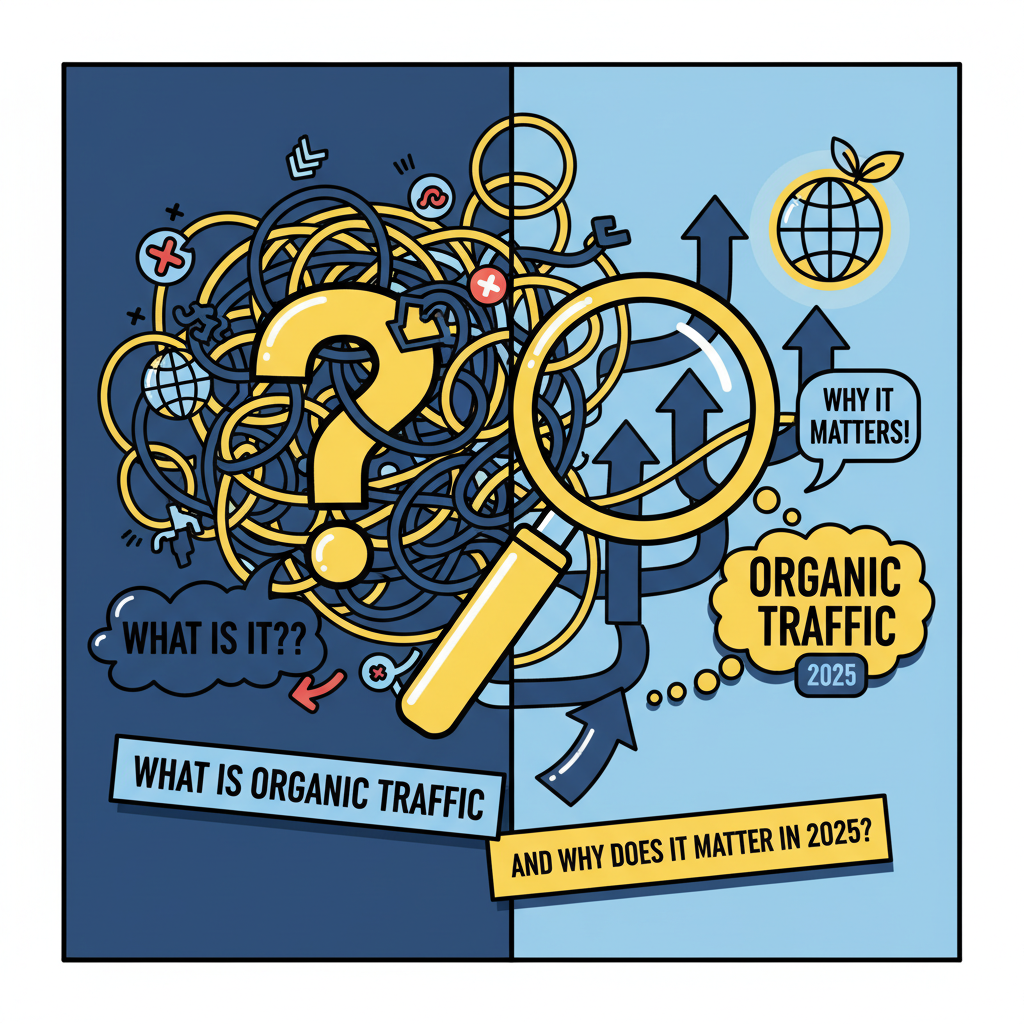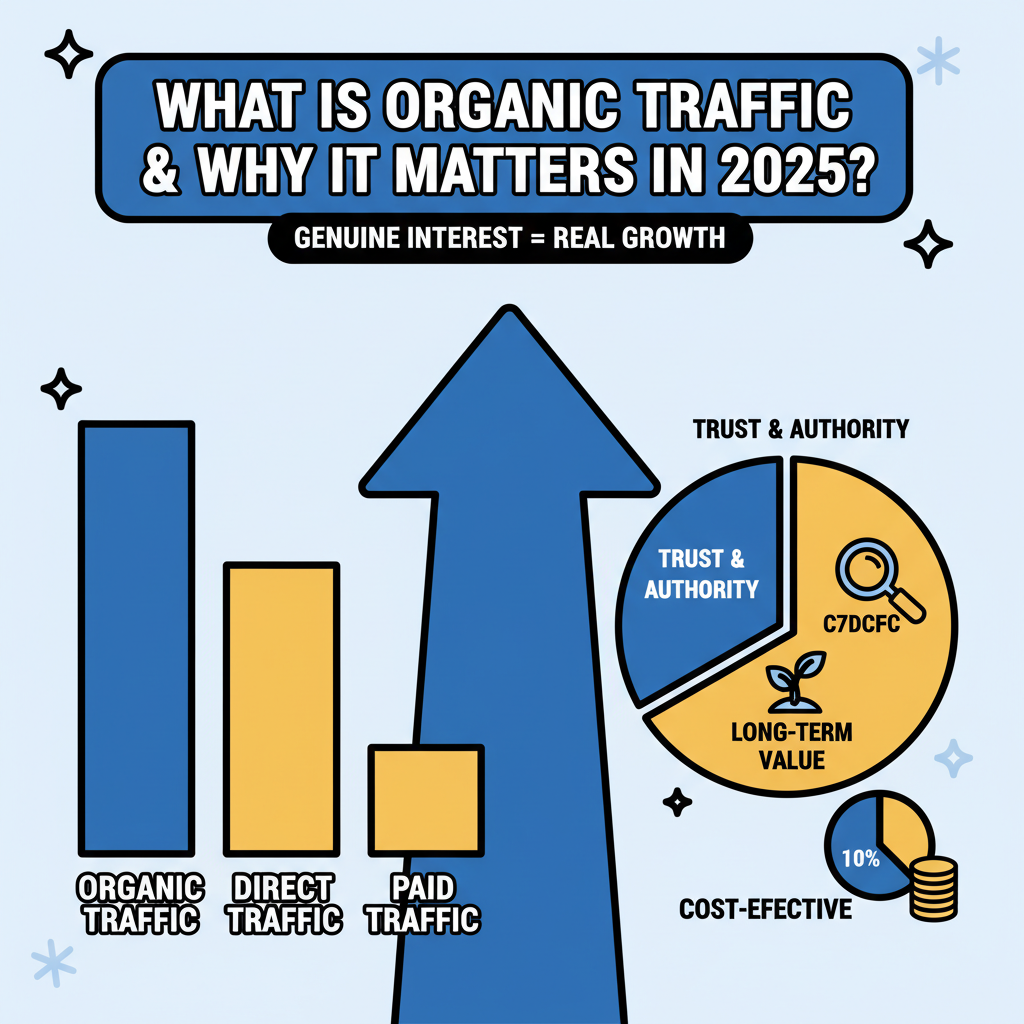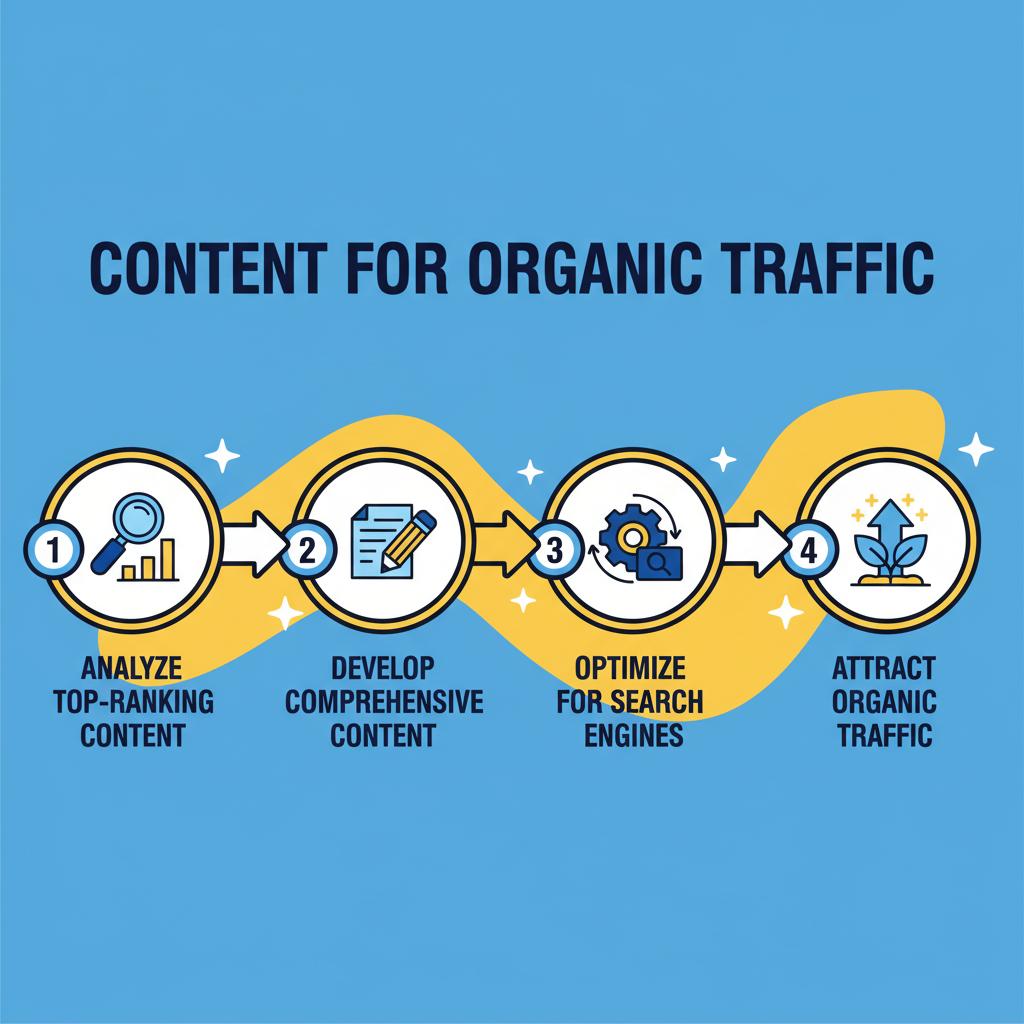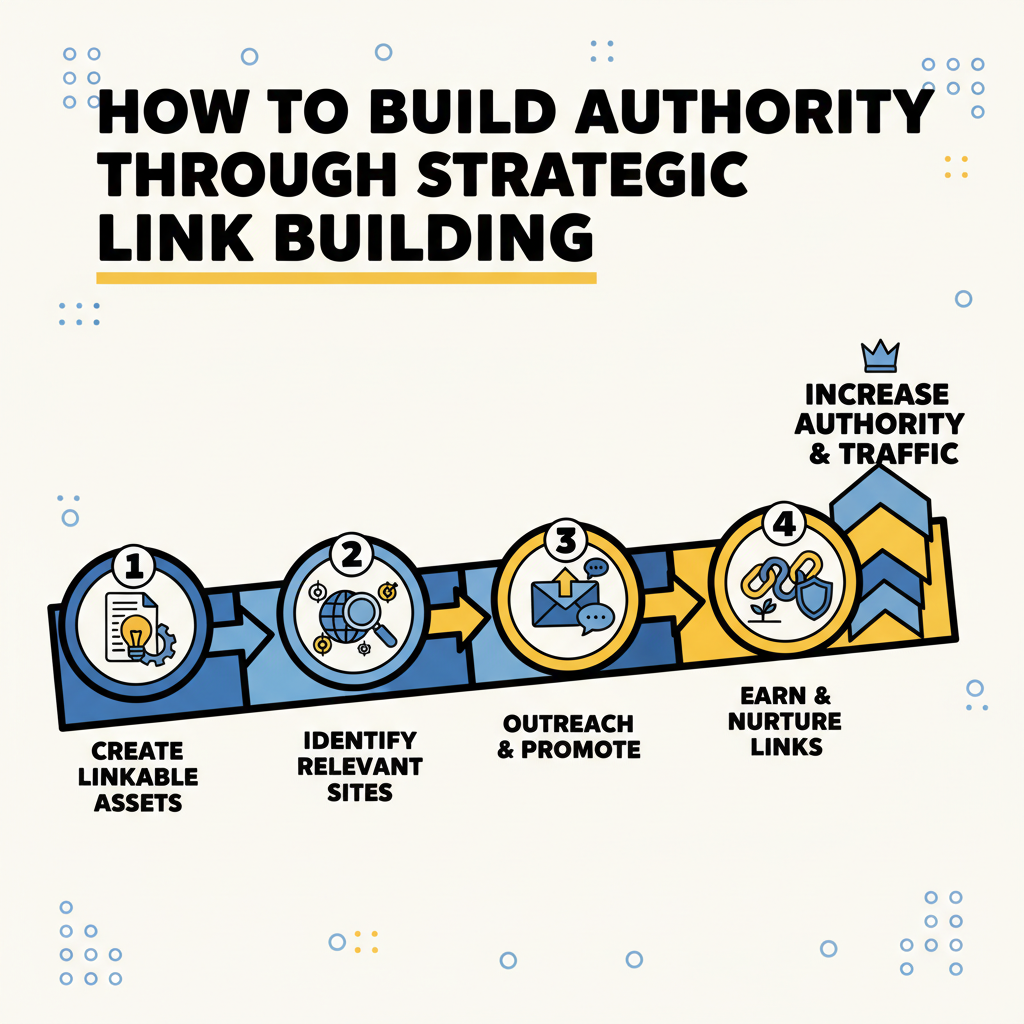What Is Organic Traffic and Why Does It Matter in 2025?
Posted by
Organic Traffic: Complete Guide for 2025

Growing your website's organic traffic has never been more crucial than it is today. With search algorithms constantly evolving and competition intensifying across every industry, understanding how to attract visitors naturally through search engines can make or break your online success. This comprehensive guide will walk you through proven strategies, emerging trends, and actionable tactics to maximize your organic traffic in 2025. Whether you're starting from scratch or looking to scale your existing results, you'll discover the exact steps needed to build a sustainable traffic foundation.
What Is Organic Traffic and Why Does It Matter in 2025?

Organic traffic represents visitors who find your website through unpaid search engine results. Unlike paid advertising, these visitors arrive because search engines determined your content best matches their query. This makes organic traffic incredibly valuable since it indicates genuine interest and intent.
In 2025, organic traffic has become even more critical as consumer behavior shifts toward trust-based decision making. Research from BrightEdge shows that organic search drives over 50% of all website traffic across industries. Users increasingly skip paid ads, preferring organic results they perceive as more credible and relevant.
The landscape has also evolved with AI-powered search features and voice search optimization becoming standard requirements. Understanding what makes organic SEO different from generic approaches helps you adapt to these changes while building long-term visibility.
How to Conduct Strategic Keyword Research for Maximum Organic Impact
Effective keyword research forms the foundation of any successful organic traffic strategy. Start by identifying your primary topics using tools like Google Keyword Planner, Ahrefs, or SEMrush. Focus on search intent rather than just search volume, as Google's algorithm prioritizes relevance over popularity.
Create a keyword hierarchy that includes primary keywords (high competition, high volume), secondary keywords (moderate competition, decent volume), and long-tail variations (low competition, specific intent). This approach ensures you capture traffic at every stage of the customer journey.
Consider seasonal trends and emerging topics in your industry. Use Google Trends to identify rising search queries and incorporate them into your content calendar. The key is balancing established keywords with opportunities that competitors might overlook.
| Keyword Type | Competition Level | Search Volume | Conversion Potential |
|---|---|---|---|
| Primary Keywords | High | 10K+ monthly | Medium |
| Secondary Keywords | Medium | 1K-10K monthly | High |
| Long-tail Keywords | Low | 100-1K monthly | Very High |
| Branded Keywords | Low | Variable | Very High |
How to Create Content That Naturally Attracts Organic Traffic

Content creation for organic traffic requires a strategic approach that balances user value with search engine optimization. Start by analyzing the top-ranking pages for your target keywords to understand what Google considers valuable for those queries.
Develop comprehensive content that thoroughly covers your topic from multiple angles. This doesn't mean longer is always better, but rather that your content should be the most complete resource available. Include relevant subtopics, answer related questions, and provide actionable insights that users can implement immediately.
Structure your content with clear headings, bullet points, and visual elements that enhance readability. Search engines favor content that users engage with positively, so focus on creating an excellent user experience alongside keyword optimization.
What Makes Content Rank Higher in Search Results?
High-ranking content typically demonstrates expertise, authority, and trustworthiness (E-A-T). This means citing credible sources, providing original insights, and maintaining factual accuracy throughout your content. Google's algorithm has become sophisticated at identifying and rewarding genuinely helpful content.
Fresh content also performs better than outdated information. Regularly update your existing content with new data, recent examples, and current best practices. This signals to search engines that your content remains relevant and valuable.
How to Optimize Technical SEO for Better Organic Performance
Technical SEO creates the foundation that allows your content to rank effectively. Start with site speed optimization, as Google's Core Web Vitals directly impact rankings. Use tools like Google PageSpeed Insights to identify and fix performance issues.
Ensure your website is mobile-friendly and provides an excellent user experience across all devices. With mobile-first indexing, Google primarily uses the mobile version of your site for ranking and indexing purposes.
Implement proper URL structure, meta tags, and schema markup to help search engines understand your content better. Clean, descriptive URLs and compelling meta descriptions improve both rankings and click-through rates from search results.
How to Fix Common Technical SEO Issues
Address crawl errors by regularly checking Google Search Console for issues that prevent search engines from accessing your content. Fix broken links, redirect chains, and duplicate content problems that can dilute your organic traffic potential.
Optimize your XML sitemap and robots.txt file to guide search engines toward your most important content. This becomes especially crucial as your website grows and you need to prioritize crawl budget effectively.
How to Build Authority Through Strategic Link Building

Link building remains one of the most powerful factors for improving organic traffic, but the approach has evolved significantly. Focus on earning high-quality backlinks from relevant, authoritative websites in your industry rather than pursuing quantity.
Create linkable assets such as original research, comprehensive guides, or useful tools that other websites naturally want to reference. This organic approach to link building tends to generate higher-quality links that provide lasting value.
Develop relationships with industry influencers, journalists, and other content creators who might find your content valuable enough to share. Guest posting on relevant websites can also drive both direct traffic and valuable backlinks when done strategically.
How to Measure and Improve Your Organic Traffic Results
Track your organic traffic performance using Google Analytics 4 and Google Search Console. Monitor not just total traffic numbers, but also engagement metrics like time on page, bounce rate, and conversion rates to understand traffic quality.
Set up goal tracking to measure how organic traffic contributes to your business objectives. This might include newsletter signups, product purchases, or contact form submissions depending on your website's purpose.
Analyze your top-performing content to identify patterns in topics, formats, and optimization techniques that resonate with your audience. Use these insights to inform your future content strategy and improve underperforming pages.
Regular monitoring allows you to identify and address issues quickly. Building sustainable organic traffic requires consistent attention to performance metrics and ongoing optimization efforts.
What Are the Biggest Organic Traffic Opportunities in 2025?
Voice search optimization presents a significant opportunity as smart speakers and mobile voice search continue growing. Optimize for conversational queries and featured snippet opportunities to capture this expanding traffic source.
AI-powered search features like Google's SGE (Search Generative Experience) are changing how users interact with search results. Create content that answers questions directly and provides clear, authoritative information that AI systems can confidently reference.
Local SEO opportunities continue expanding, especially for businesses with physical locations or service areas. Optimize for "near me" searches and location-specific keywords to capture local organic traffic.
Video content integration offers another growth avenue, as search engines increasingly feature video results in organic listings. Create video content that complements your written content and optimize it for search visibility.
Conclusion
Mastering organic traffic in 2025 requires a comprehensive approach that combines strategic keyword research, high-quality content creation, technical optimization, and ongoing performance analysis. The key is consistency and adaptation as search algorithms continue evolving to better serve user intent.
Start implementing these strategies systematically, focusing on creating genuine value for your target audience while following SEO best practices. Remember that organic traffic growth takes time, but the long-term benefits of sustainable, high-quality traffic make the investment worthwhile.
Ready to accelerate your organic traffic growth? Fast SEO Fix specializes in helping websites achieve rapid, sustainable organic traffic improvements through proven strategies and automated optimization techniques. Contact us today to discover how we can help transform your search visibility and drive meaningful results for your business.